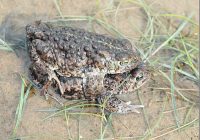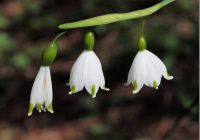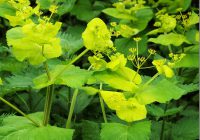Dr Phil Smith’s Wildlife Notes
April 2018
April 2018 really broke the mould. Since the millennium, we have got used to prolonged droughts, with April showers a distant memory. This month, measurable rain fell on 12 days and, although it was mainly colder than average, there was a heatwave from 18th to 21st with the highest April temperatures (in London) since 1949. Remarkably, the dune water-table actually rose by 4.5cm during the month. The result was the best Natterjack Toad activity for several years. For the first time, these rare amphibians spawned in the youngest section of the Green Beach at Ainsdale. Although usually nocturnal, some amorous male Natterjacks started calling during the afternoon of 9th and I found three pairs as well as ten Smooth Newts, while Skylarks were singing their hearts out overhead and 18 migratory White Wagtails foraged on the shore.
Meanwhile Natterjacks were also active at the flooded Devil’s Hole, laying several spawn strings soon to hatch into tiny tadpoles. I noticed a black beetle, of a kind new to me, struggling in the water and fished it out. Photographs sent to Gary Hedges at World Museum Liverpool identified it as a Snail-eating Beetle Silpha tristis, an insect that is fairly widespread but not at all common.
Gems in the Dunes organised an Open Day on 14th, my contribution being a guided walk to look for dune annuals, tiny plants representing several families that flower in spring and then die down to survive the drought of summer as seeds. Most visitors don’t notice them but we found 15 species in just over an hour, including the Early Forget-me-not looking superb under a magnifying lens. Two colourful Small Tortoishell butterflies freshly out of hibernation were another reminder of the season.
The following day, I joined two-winged fly expert, Phil Brighton, on Birkdale Green Beach. He hoped to find a group of small flies associated with willow catkins and was delighted to collect the very rare Egle brevicornis with only six previous British records. We also heard Natterjacks and a Water Rail giving its “squealy pig” call from the reeds. I noticed several unfamiliar 4mm-long dung-beetles on the bare sand. Again photos provided the answer – the Dune Scarab Aegialia arenaria, a mainly coastal species.
The following week, Ph.D. student, Claire Flynn, drove all the way from Pembrokeshire to check out our Vernal Mining Bees. She is comparing the genetics of long-established colonies in Northwest England and North Wales with recent discoveries in the south and midlands, which are thought to be invaders from the European mainland. I took her onto the Hightown dunes where I had earlier estimated 2000 bees flying on dune ridges near the Sailing Club. Conditions were perfect and these solitary bees, slightly larger and darker than a Honey Bee, were abundant. Claire was also pleased to see her first Northern Dune Tiger Beetle and several Hairy Sand-wasps.
With Patricia Lockwood, I called in at Ashdale Close, Formby, on 25th to see the colony of Moschatel or Town-hall-clock in a small area of woodland, known here since 2010. Moving on to Wicks Lake, we spotted the first Orange Tip butterfly of the spring and re-visited a clump of Summer Snowflake found in 2013. It has grown considerably, showing 12 spectacular flowering spikes. Nearby, the Primroses on a grassy bank were more floriferous than ever, while a large bush of the extremely rare Don’s Willow was covered in beautiful red-tinged catkins.
Another botanical highlight was Perfoliate Alexanders in woodland near to Formby Baths. First found by Joshua Styles last year, this strikingly coloured native of Eastern Europe has increased to about 150 plants and is new to the South Lancashire vice-county. Josh also joined me for a survey of parts of Birkdale Common that were damaged by the tented village erected for the Open Championship last summer. Large areas of bare ground are being colonised by a wide range of annuals, including an abundance of Parsley-piert, Blinks and the uncommon Bird’s-foot. I was also delighted to re-find a patch of a distinctive hybrid between Field Mouse-ear and the closely related Snow-in-Summer,which I first spotted here in 2010.
Although I managed to miss most of the “good” birds reported during the month, including a Hoopoe at Formby Point, I finally caught up with Formby’s first Cetti’s Warbler at Hoggs Hill Lane on 28th. Its incredibly loud, explosive song is one of the most unmistakable sounds in nature. The month ended with a goose extravaganza at Crossens Marsh, where an impressive flock of 3500 Pinkfeet included a Lesser Snow-goose, a Barnacle, two Russian Whitefronts and a Western Bean. Nearby feral Greylags and Canadas meant that seven goose species were visible from the coast road! Two Spoonbills and three Mediterranean gulls from the RSPB hide crowned a successful afternoon.




